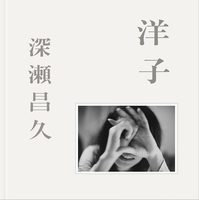$81.35
- Hardcover
- 236 pages
- 210 × 285 × 29 mm
- ISBN 9784865411430
- Jun 2022
- Japanese / English / Chinese
From his long-awaited entrance to the Tokyo University of the Arts to the completion of his PhD, Muraoka pursued his creation and nothing else for nine years. One day during that period he had a shocking encounter - with a photobook of Pompeii, and with the Villa of the Mysteries.
"Today I am aware that my work tends to towards expression in reds, but I was originally fond of blue gray and green gray. After I began to practice Japanese painting and saw mineral pigments, I became moved by shades of red - in particular the bitter and vivid shades of burnt sienna, which has a primitive feel that shakes and excites my heart. It symbolizes earth, blood, life, and fire, as well as a sense of sensuality. The color of the mural in Pompeii was this very burnt sienna shade. The moment I saw that red I was awakened to something new. From that moment on the color has been imprinted deep in my consciousness."
Nine years later, Muraoka actually visited Pompeii.
"The atmosphere inside the villa, with its dim cool air, silent and without tourists, and the world outside it, bathed in strong sunlight, with a chorus of birds, was something I could not receive just from a book. That was when I realized that the Villa of the Mysteries was not just an object of art but an architectural space and a historical ruin. The volcanic ash protected the surface of the mural, strangely concealing its history, and at the same time conveying the accumulation of an overwhelming period of time. I did not understand the content or intentions of what was painted there accurately.
In fact, I don't even know who painted it. I just looked at it and was touched by it. I believe the mural in Pompeii taught me what painting should be, and brought me back to my pure self."
Regardless of place and time, there are many artifacts that inspire Muraoka: Klimt, Romanesque sculpture in Toulouse, La Dame à la licorne ('The Lady and the Uni- corn'), the Bayeux Tapestry, Tatsuo Takayama, the Rimpa school, the statue of Ashura in Kofukuji and so on. However, the Villa of the Mysteries in Pompeii holds a special place in his heart, and continues to resonate through his work like thoroughbass.[...]
"If people say that what I do is not Japanese painting and therefore I am not a Japanese painting artist, then I am fine with not being one. Finding the landscape I want to see is the most important point, not being a Japanese painting artist. I will not stop creating with my own hands, nor discard painting subjects. It is not that I am trying to express with eccentricity, but that I am finding what I want to see and calculating back to the material I need to express it. That is all I want to do."
Technology progresses inexorably, but will humans entrust everything to it? As things are processed more efficiently and simply, the human hand may at the same time be drawn towards the chaotic, the unreasonable and the mysterious.
For Muraoka, 'questioning' and 'exploring' are probably synonymous. Upon the foundation of the moving moment he experienced in Pompeii, he will continue in his belief that art in its purist sense should stimulate joy and wonder and, transcending genres, he will question the purpose of art and its exploration.
Extracted from the text 《Questioning, while exploring his world 》
Tomoko Kunugi Representative of Ishin-Denshin




































